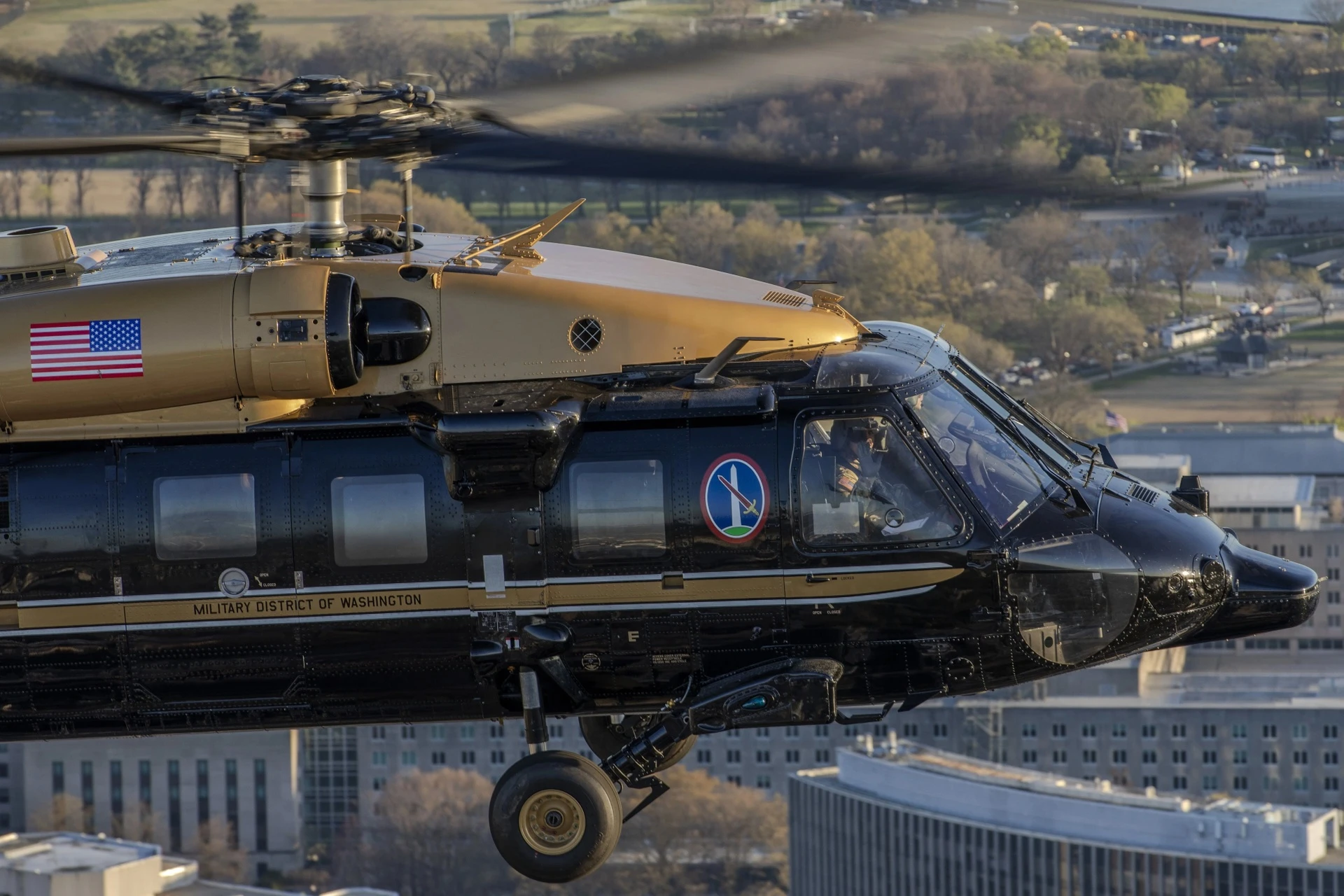
The U.S. Army helicopter involved in the January 29 crash that killed 67 people near Washington was part of a unit tasked with transporting top military officials and government leaders, raising questions about the safety of these operations.
Based at Fort Belvoir, Virginia, the Army’s 12th Aviation Battalion is not just a “flying taxi” for generals and high-ranking officials. In the event of an attack on Washington, the battalion is responsible for swiftly evacuating key government leaders to secure locations, according to The Wall Street Journal.
However, following the fatal mid-air collision between one of its Black Hawk helicopters and a commercial jetliner near Reagan National Airport, concerns have emerged over the risks associated with military flight training in one of the country’s busiest airspaces. The battalion’s routine VIP transport operations are also under scrutiny.
A Special Mission in a Crowded Sky
On January 31, the Federal Aviation Administration (FAA) announced an indefinite suspension of most military helicopter flights near Reagan Airport, while the Army grounded the 12th Aviation Battalion’s flights pending review.
Several lawmakers representing districts near the airport have called on Defense Secretary Pete Hegseth to impose a long-term flight suspension and conduct a full safety assessment.
For decades, the 12th Aviation Battalion has ferried senior officials, including in combat zones abroad. Today, its primary mission is domestic, ensuring government continuity during crises, much like after the 9/11 attacks.
The battalion also routinely transports high-ranking military leaders and civilian officials between government installations, effectively serving as an air taxi for Washington’s elite. Its operations cover Washington, Pennsylvania, Virginia, and Maryland.
Senior officers frequently take helicopter flights from Fort Belvoir—home to multiple military commands—to the Pentagon, saving an estimated 45 minutes of road travel. Helicopter flights are so routine in Washington that the sound of rotor blades is a constant backdrop at the Pentagon.
In addition to the Army’s 12th Aviation Battalion, the U.S. Air Force’s 1st Helicopter Squadron also provides aerial transport for high-ranking officials in Washington.
“I’ve heard pilots refer to themselves as the generals’ taxi service,” said Andrew Logan, co-founder of Helicopters of DC, a website that tracks helicopter activity in the capital.
Investigation Underway
Military officials have disclosed that the Black Hawk helicopter in the crash was flying at least 100 feet higher than authorized and may have strayed from its designated flight path.
FAA investigators noted that, at the time of the crash, a single air traffic controller was responsible for managing both helicopter and fixed-wing aircraft operations. An internal FAA report called this arrangement “unusual given the time of day and traffic volume.”
On January 31, the Army identified two of the three soldiers aboard the Black Hawk: Chief Warrant Officer 2 Andrew Loyd Eaves, 39, and Staff Sergeant Ryan Austin O’Hara, 28. The third crew member’s identity has not been released at the family’s request.
The helicopter crew had over 1,500 combined flight hours, with several hundred logged over Washington’s restricted airspace. Eaves, the instructor pilot, was a decorated veteran who served in the U.S. Navy from 2007 to 2017 before transitioning to the Army.
O’Hara had served in the Army for 10 years, including a deployment to Afghanistan from March to August 2017. His body was recovered, while Eaves remains missing.
Debate Over VIP Helicopter Flights
Military officials argue that these helicopter flights are necessary to maximize the efficiency of senior leaders. However, the fatal crash has reignited concerns about the safety of these operations in Washington’s heavily congested airspace—especially near Reagan National Airport.
Although no previous helicopter-commercial aircraft collisions had been reported in the Reagan Airport area before January 29, other near-misses have occurred.
“A minimum of one mile of lateral separation is needed between flight paths,” said a former Army helicopter pilot now working in civilian aviation. “Military helicopters should not cross active approach lanes. If they must, the distance to the airport should be at least one mile.”
This pilot described Reagan National as a “difficult” airport due to its short runways, numerous restricted airspaces, and heavy air traffic. He estimated that military helicopters appear on approach about 75% of the time he lands there.
A Complex Issue With No Easy Solution
However, rerouting helicopters is not straightforward. Washington’s airspace is already heavily restricted, and former military pilots argue that training flights are essential for safety.
“If flight hours are reduced, pilot proficiency will decline. Lower proficiency leads to more accidents and higher casualties,” said Brad Bowman, a former company commander in the 12th Aviation Battalion.
The Pentagon and the National Transportation Safety Board (NTSB) have launched a full investigation into the crash. Officials are examining air traffic control instructions given to the Black Hawk crew, the decision to change the commercial jetliner’s landing runway, and whether the military helicopter was flying too high.
(According to The Wall Street Journal, CNN, FAA Reports)
Hello Shuttle will strive to bring the latest updates. At the end of the day.
Are you looking for reliable airport and cruise port transfer services in Los Angeles?
We offer professional, safe, and punctual transportation from
Los Angeles Airport - LAX
Long Beach Airport - LGB
John Wayne Airport - SNA
San Pedro cruise port
Long Beach cruise port
Disneyland
and other destinations.
Let us make your journey stress-free and comfortable with our dedicated drivers and high-quality vehicles. Book now for the perfect travel experience at www.helloshuttle.com or call 944-800-5678!


